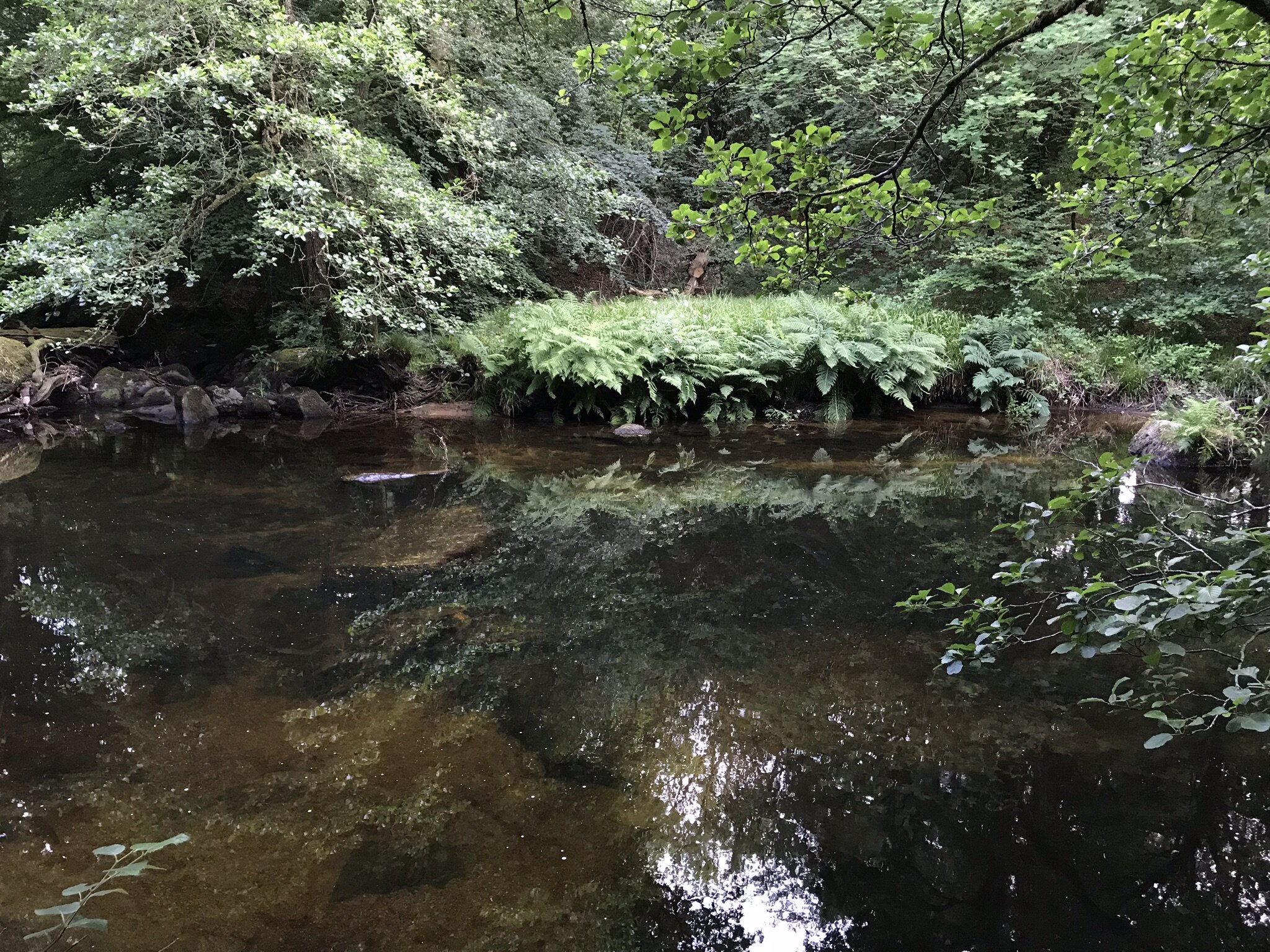By Colin Burbidge and Jane Elliott
During the eighteenth and nineteenth centuries artists increasingly came to Dartmoor to paint the wild and rugged scenery. Indeed, some would say these artists were responsible for helping to make the area a popular tourist destination. The Victorian artist William Widgery was painting scenes along the Teign river at just the time that St Olaves was being created by John Ingle. His oil painting of Fingle bridge, just a few miles downstream from St Olaves can be seen in the Royal Albert Memorial Museum in Exeter. He and his son Frederick Widgery were noted for their ability to capture the soft damp quality of the Dartmoor light.
The following report from the Exeter & Plymouth Telegram on 18 April 1870 gives a sense of the popularity of William Widgery’s work in the late nineteenth century.
Devon & Exeter Graphic Society Art Exhibition
A share of the honours of this exhibition are due to Mr. William Widgery, who is host himself in any collection of modern Devonshire pictures. He has a fine conspicuous oil painting hung opposite the entrance to the gallery, a fair example of his style of landscape, illustrative of the scenery of the upper waters of the Teign. Mr.Widgery has, in a manner, established his right to distribute among the lovers of English landscape-painting, glowing views of that previously almost undiscovered artist's paradise. No picture-fancier travelling through beauteous Devon in these days would consider he had done his duty by himself or by the county if he left the west country without, carrying away with him a memento of the bright visions of the higher shallows of the Teign from Widgery's easel. The tall painting of luxuriant greenwood, precipitous and rugged declivity, ferns and falling water, which occupies the chief place among those which he has contributed to this gallery, is taken from a spot near Chagford, not likely to be found by the tourist unless he availed himself of the aid of an artist-guide.
William Widgery “the Upper Teign from Gidleigh Park”
© Royal Albert Memorial Museum & Art Gallery, Exeter City Council.
There are many such secluded bits of nature, too romantic for common reality, in that region, scarcely ever seen except by those who dwell in the remote villages upon the outskirts of Dartmoor. Mr. Widgery, by long study of this description of scenery, knows how realize it upon the canvas as to bring away just the impression it makes upon the mind. Anyone who had wandered about that country would know, when he saw this dribbling of water down the hill, the green hue of the sunlight through the tall trees, the bits of wildflower, the rocky basin wherein the stream widens and rests and gets smooth for a moment before it descends again, and the limited peep of dappled blue sky straight above, that he was looking upon a piece of Devon scenery, and those who are at all familiar with Devonshire art in our day would recognize in it the hand of Widgery.
William Widgery was born in North Molton where his father was a farm labourer. He came to Exeter as a young man and at first worked as a builder. In his spare time, he copied paintings by famous Victorian artists such as Sir Edwin Landseer. Dartmoor was his major inspiration, especially the area around Lydford where in 1880 he built a house and studio.








